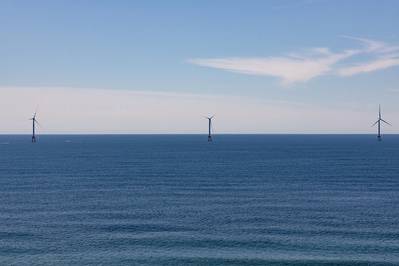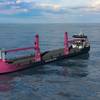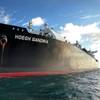BOEM and NOAA Announce Joint Strategy for Fisheries Surveys
The Bureau of Ocean Energy Management (BOEM) and the National Oceanic and Atmospheric Administration (NOAA) Fisheries will work together to address potential impacts of offshore wind energy development on NOAA Fisheries’ scientific surveys, which help to manage the United States’s fisheries.
For 150 years, the NOAA’s scientists have collected survey data that form the basis of the science-based management of America’s federal fisheries, support the protection and recovery of marine mammals and endangered and threatened species, and increase understanding and conservation of coastal and marine habitats and ecosystems for future generations.
“This joint strategy will help ensure the quality of NOAA’s fisheries surveys and data are maintained while the nation develops offshore wind energy,” said Janet Coit, assistant administrator for NOAA Fisheries, acting assistant secretary of commerce for oceans and atmosphere, and deputy NOAA administrator. “Our fisheries surveys allow NOAA to monitor important trends for individual species over time, with the broader goals of understanding marine ecosystems, particularly in the face of climate change, and supporting sustainable fisheries.”
“BOEM values our partnership with NOAA to proactively address key challenges as we work together to achieve the Administration’s ambitious offshore wind goals,” said Amanda Lefton, BOEM director. “We are committed to incorporating the best available science into our decision making processes as we continue to advance the Biden-Harris administration’s goal of deploying 30 gigawatts of offshore wind energy by 2030. By taking an all-of-government approach, we can leverage the expertise and resources of our federal partners to ensure responsible development of offshore wind energy.”
During the environmental review of the first offshore wind energy project on the U.S. Outer Continental Shelf, BOEM and NOAA Fisheries identified major adverse impacts on surveys conducted in the Northeast region. In response, a draft survey mitigation strategy was developed and made available for public comment earlier this year. Now finalized, the strategy identifies the essential components of mitigating the impacts of offshore wind energy development on the surveys.
According t BOEM and NOAA, the five goals of the strategy are:
- Mitigate impacts of offshore wind energy development on NOAA Fisheries surveys.
- Evaluate and integrate, where feasible, wind energy development monitoring studies with NOAA Fisheries surveys.
- Collaboratively plan and implement NOAA Fisheries survey mitigation with partners, stakeholders, and other ocean users using the principles of best scientific information available and co-production of knowledge, including fishermen’s local ecological knowledge and indigenous traditional ecological knowledge.
- Adaptively implement this strategy recognizing the long-term nature of the surveys and the dynamic nature of wind energy development, survey technology and approaches, marine ecosystems, and human uses of marine ecosystems.
- Advance coordination between NOAA Fisheries and BOEM in the execution of this Strategy and share experiences and lessons learned with other regions and countries where offshore wind energy development is being planned and underway.
The strategy—while focused on New England and the Mid-Atlantic—will serve as a model to address the impacts of offshore wind on NOAA Fisheries surveys in other regions. Nationally, NOAA Fisheries assesses the status of approximately 450 fishery stocks, 200 marine mammal stocks, and 165 threatened and endangered species (recognizing that some marine mammals are also endangered). These assessments rely on more than 50 long-term, standardized surveys, many of which have been ongoing for more than 30 years.













